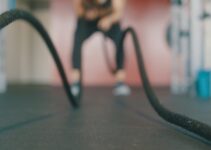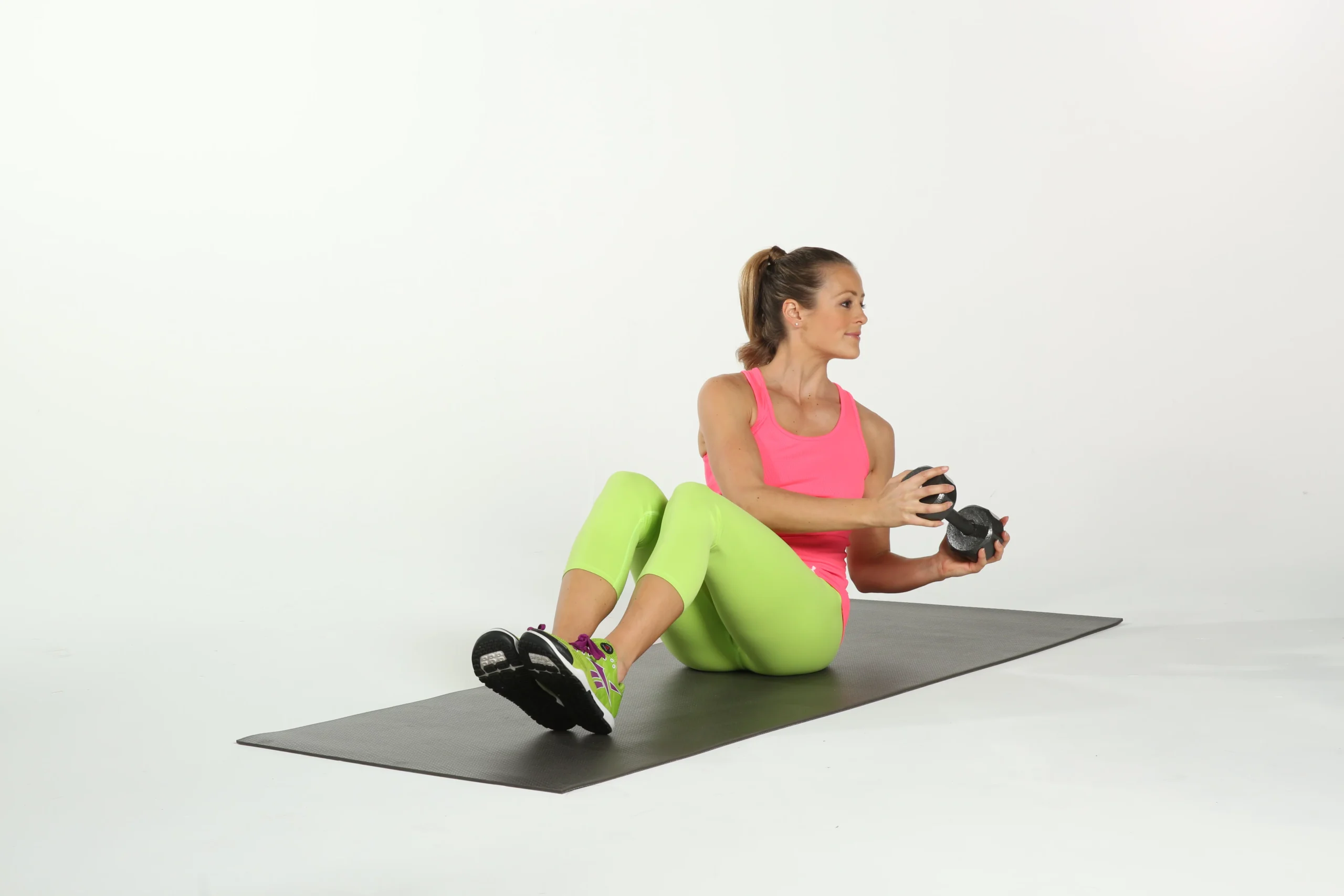Exercise Tips at Home to Lose Weight: 11 Proven Strategies for Effective Weight Loss
Introduction to Home-Based Weight Loss
Losing weight from the comfort of your own home is not only convenient but also completely possible with the right approach and tools. Whether you are looking to shed a few pounds or undergo a major transformation, the following tips will guide you through creating a sustainable home workout regimen that aligns with your weight loss goals.
Table of Contents
Understanding the Basics of Weight Loss
Weight loss is fundamentally about creating a calorie deficit, which means burning more calories than you consume. This can be achieved through a combination of dietary changes and increased physical activity. Understanding this balance is crucial to designing an effective weight loss strategy.
Calories and Weight Loss
What are Calories?
Calories are a measure of energy that comes from the food you eat. The number of calories your body requires daily depends on your age, sex, weight, height, and level of physical activity.
Creating a Calorie Deficit
To lose weight, you need to eat fewer calories than your body burns in a day. The recommended daily calorie deficit for safe and sustainable weight loss is 500 to 750 calories. This typically leads to a weight loss of about 1 to 1.5 pounds per week.
Tracking Calories
Using apps or food diaries to log meals and track calorie intake can be incredibly effective. Understanding where your calories come from can help you make healthier choices about what foods to eat.
The Role of Physical Activity
Benefits of Exercise
Physical activity is crucial not only for weight loss but also for improving heart health, increasing strength and endurance, reducing stress, and enhancing mental health.
Calories Burned Through Exercise
Different activities burn different amounts of calories. Factors that influence calorie burn include intensity, duration, and the individual’s body weight. Regular exercise also helps boost metabolism, the rate at which your body burns calories, which can accelerate weight loss.
Exercise Tips at Home to Lose Weight
Implementing an effective workout regimen at home can be straightforward and does not necessarily require equipment. Here are some top exercises and tips for maximizing fat loss.
Cardiovascular Exercises for Burning Fat
Cardiovascular (or aerobic) exercise is any form of exercise that increases your heart rate, breathing, and endurance. Here are a couple of effective cardio exercises:
Jumping Jacks: A Full-Body Cardio Move
Benefits:
- Burns calories quickly.
- Increases heart rate, which is great for cardiovascular health.
- Engages multiple muscle groups, enhancing muscular endurance and overall fitness.
How to Perform Jumping Jacks:
- Stand with your feet together, arms at your sides.
- Jump up, spreading your feet beyond hip-width apart while simultaneously raising your arms above your head.
- Jump again to return to the starting position.
- Repeat for sets of 30 seconds to 1 minute.
High Knees: Boosting Heart Rate and Engaging Core
Benefits:
- Excellent for burning calories and increasing the heart rate.
- Strengthens leg muscles and the core.
- Can be integrated into interval training for enhanced fat loss.
How to Perform High Knees:
- Stand with your feet hip-width apart.
- Jog in place, lifting your knees as high as possible towards your chest.
- Pump your arms to maintain balance and increase intensity.
- Continue for 30 seconds to 1 minute for each set.
Strength Training to Enhance Metabolism
Strength training is not only about building muscle mass; it also helps increase metabolism, making it a crucial part of any weight loss program.
Benefits of Strength Training:
- Increases muscle mass, which burns more calories at rest compared to fat mass.
- Enhances bone density and overall physical strength.
- Improves insulin sensitivity, which can help with the regulation of blood sugar levels.
Key Strength Exercises:
- Bodyweight Squats: These target the quadriceps, hamstrings, and gluteal muscles.
- Push-Ups: These primarily work the chest, shoulders, and triceps.
Implementing a Routine:
- Frequency: Aim for at least two days of strength training per week. Allow at least one day of rest between sessions.
- Sets and Repetitions: Beginners should start with 1-2 sets of 12-15 repetitions per exercise.
- Progression: Gradually increase the number of sets and repetitions as strength improves. Optionally, add resistance with bands or household items to intensify the workout.
By combining cardiovascular exercises with strength training and a controlled diet, individuals can create an effective, manageable, and sustainable weight loss regimen at home. This holistic approach not only helps reduce body fat but also significantly improves overall health and wellbeing.
Optimizing Your Home Environment for Weight Loss
Creating an environment that enhances your ability to lose weight from home involves more than just physical space—it also includes setting up psychological cues to keep you motivated and dedicated to your fitness goals. Here’s how to effectively optimize your home for weight loss:
Setting Up a Home Gym: Minimal Equipment Needed
Creating a functional home gym does not require a lot of space or expensive equipment. Here’s how to do it effectively:
- Choose the Right Space: Ideally, find a space that is airy, well-lit, and at least a bit secluded from high traffic areas of your home. If space is limited, ensure that it can be quickly adapted for workouts, such as moving furniture aside easily.
- Essential Equipment: Start with the basics such as yoga mats, resistance bands, and a set of dumbbells. These are versatile and can be stored easily. As you progress, consider adding a stability ball, kettlebells, or even a pull-up bar.
- Organized and Inviting: Keep the area uncluttered and inviting. This not only makes it easier to start your workout but also keeps you motivated. Consider adding a mirror to check your form during exercises.
- Technology Setup: Include a TV or a monitor setup where you can follow along with workout videos or stream music to keep you energized.
Motivational Tips: Keeping Yourself Inspired
Maintaining motivation can be challenging, especially when working out alone at home. Here are some strategies to help keep your spirits up:
- Set Goals and Track Progress: Use a wall chart or digital app to track your workouts and progress. Seeing your achievements in writing can be a huge motivator.
- Create a Routine: Establish a workout routine that fits into your daily schedule. Consistency is key to forming lasting habits.
- Social Support: Join online fitness communities, where you can share your progress, get tips, and stay motivated through community challenges.
- Decorate for Inspiration: Hang motivational posters or set up your workout area with bright, energizing colors to boost your mood before you start.
- Reward Yourself: Set up rewards for meeting certain milestones, such as a new workout outfit or a special meal, to make the journey enjoyable.
Combining Diet with Exercise for Effective Weight Loss
For the best results, diet and exercise must be combined as part of an overall lifestyle change. Here’s how to synchronize your nutrition with your workout regimen:
- Fuel Your Workouts: Eat a balanced diet that includes a mix of macronutrients. Carbohydrates are good for fueling energy-intensive workouts, proteins are essential for muscle repair and growth, and fats are important for long-term energy.
- Hydration: Stay hydrated not only to support your metabolism but also to ensure optimal performance during workouts. Water is usually sufficient, but if you engage in long-duration fitness sessions, consider hydration supplements that replace electrolytes.
- Pre and Post-Workout Meals: Consume carbohydrates before workouts for energy, and eat protein after workouts to aid in muscle recovery. Timing these meals can optimize your energy levels and recovery.
- Consistent Meal Times: Eating at regular times can help regulate your metabolism and improve your body’s fat-burning capabilities. It also helps to manage hunger levels throughout the day.
- Mindful Eating: Pay attention to what and when you are eating. Avoid distractions during meals to prevent overeating.
Bodyweight Squats: Tone Legs and Increase Metabolism
Bodyweight squats are a fantastic exercise for toning the legs and boosting the metabolism. Here’s how to perform them correctly:
- Starting Position: Stand with your feet shoulder-width apart. You can extend your arms out straight in front for balance.
- Movement: Lower your body by bending the knees and pushing your hips back as if sitting in a chair. Keep your back straight at a slight angle.
- Depth: Go down until your thighs are at least parallel to the floor. Ensure your knees do not go over your toes.
- Rising: Engage your core and press back up to the starting position through your heels.
- Repetition: Aim for 3 sets of 10-15 repetitions.
Push-ups: Upper Body and Core Strengthening
Push-ups are excellent for strengthening the upper body and core simultaneously. Here’s the correct way to do them:
- Starting Position: Get into a plank position with your hands planted firmly on the ground, slightly wider than shoulder-width apart.
- Lowering Down: Bend your elbows to lower your body towards the floor. Keep your body in a straight line from head to heels.
- Depth: Go down until your chest or chin touches the floor. Elbows should point back, not out.
- Pressing Up: Extend your arms to lift your body back up to the starting position.
- Repetition: Beginners should aim for sets of 5-10 repetitions, depending on fitness level.
Incorporating these exercises into a routine, along with a balanced diet and a motivating home environment, can dramatically enhance your weight loss efforts and lead to significant long-term health benefits.
Balancing Macronutrients for Weight Loss
When embarking on a weight loss journey, understanding and managing macronutrients—proteins, carbohydrates, and fats—is crucial. Balancing these macronutrients can help optimize your metabolism, enhance satiety, and promote fat loss while preserving lean muscle mass. Here’s how you can effectively manage these critical components of your diet to support your weight loss goals.
The Importance of Protein in Weight Loss
Protein is a vital macronutrient in any diet but plays a particularly significant role during weight loss. Its benefits include:
- Satiety and Appetite Control: Protein helps reduce the hormone levels that make us feel hungry and raises the levels of peptide YY, a hormone that makes us feel full. Eating a protein-rich diet can make you feel more satisfied and reduce your overall calorie intake.
- Increased Metabolic Rate: High protein intake can boost your metabolism, allowing you to burn more calories throughout the day. This is due to the thermic effect of food, as the body uses energy to digest and make use of nutrients, and protein has a much higher thermic effect than fat or carbs.
- Muscle Preservation and Growth: Protein is essential for building and repairing muscle tissue. During weight loss, it’s important to preserve muscle mass, which burns more calories at rest compared to fat. Adequate protein intake helps maintain muscle mass, even in a caloric deficit.
Daily Protein Targets: Aim for approximately 1.2 to 2.0 grams of protein per kilogram of body weight, depending on your activity level. For example, a 75 kg person might aim for 90-150 grams of protein per day.
Managing Carbohydrates and Fats
Carbohydrates and fats are also essential, but balancing them correctly is key to achieving and maintaining a healthy weight.
Carbohydrates
- Choose Complex Carbs: Opt for fiber-rich carbohydrates such as vegetables, whole grains, and legumes, which provide sustained energy and help keep you full. These carbs have a lower glycemic index and cause a slower rise in blood glucose levels.
- Monitor Portions: Carbs can easily be overeaten, which can hinder weight loss. Portion control is important; try using measuring cups or a food scale to keep track of your carb intake.
- Timing Matters: Consuming carbohydrates around your workouts can help fuel exercise and aid in recovery. This is when your body is most efficient at processing carbs.
Fats
- Focus on Healthy Fats: Include sources of unsaturated fats in your diet, such as nuts, seeds, avocados, and fatty fish. These fats are not only good for your heart but also help you feel full.
- Cooking and Preparation: Be mindful of how you prepare foods. Cooking with large amounts of butter or oil can significantly increase the calorie content of meals. Opt for cooking methods like grilling, baking, or steaming.
- Balance is Key: While it’s important to include some fat in your diet for optimal health, be aware of portion sizes—fats are calorie-dense, with 9 calories per gram compared to 4 calories per gram of protein or carbs.
Advanced Home Exercise Tips for Weight Loss
Incorporating High-Intensity Interval Training (HIIT)
HIIT is a training methodology that involves short bursts of intense exercise alternated with low-intensity recovery periods. It is one of the most effective forms of cardiovascular exercise for fat loss and has several benefits:
- Efficiency: HIIT allows you to get a solid workout in a shorter period of time. A typical HIIT session may last from 15 to 30 minutes but can yield the same or greater benefits as moderate-intensity exercise of a longer duration.
- Increased Calorie Burn: HIIT can help you burn more calories both during and after your workout due to its high intensity. This effect is known as excess post-exercise oxygen consumption (EPOC), which means your body continues to burn calories at an elevated rate even after you’ve finished exercising.
- Fat Loss and Muscle Preservation: HIIT not only helps lose fat but also preserves muscle mass, which is often lost during weight loss, particularly when not combining exercise with proper nutrition.
Using Technology to Enhance Home Workouts
Leveraging technology can greatly enhance the effectiveness of your home workouts. Here are a few ways how:
- Fitness Apps: Apps like MyFitnessPal, Strava, or Nike Training Club can help you track your workouts, set goals, and stay motivated by joining challenges or sharing your progress with friends.
- Online Fitness Programs: Many websites and apps offer structured workout programs that can be done at home with minimal equipment. These programs often include video tutorials, which are especially useful for ensuring proper form.
- Wearable Technology: Devices like Fitbit, Apple Watch, or Garmin fitness trackers can monitor your heart rate, count steps, track your sleep, and even provide personalized recommendations based on your daily activity levels.
By understanding and managing your macronutrient intake and incorporating effective workout strategies like HIIT, you can maximize your weight loss efforts right from your home. Technology not only supports these endeavors by keeping you on track but also adds an element of interactivity and fun to your workouts, making it easier to maintain consistency and achieve your fitness goals.
Staying Motivated and Tracking Progress
Maintaining motivation and consistently tracking progress are pivotal for anyone aiming to lose weight through home exercises. When the initial enthusiasm wanes, having robust systems in place to monitor your achievements and maintain motivation can make the difference between stalling and attaining your weight loss goals.
Apps and Trackers: Your Accountability Partners
Technology can serve as your accountability partner in your weight loss journey. Here’s how you can use apps and trackers to stay on course:
- Fitness Trackers: Devices like the Fitbit, Apple Watch, or Garmin offer comprehensive tracking features that monitor your physical activities, heart rate, calorie burn, and even sleep patterns. These metrics provide you with concrete data about your progress and health improvements over time.
- Mobile Apps: Fitness apps (e.g., MyFitnessPal, Lose It!, or Headspace for meditation and stress management) can help track your dietary intake, log workouts, and connect you with a community for added support. They can also help you tailor your fitness plan based on your progress and goals.
- Virtual Challenges: Many apps offer challenges, such as completing a certain number of steps daily or a set amount of workouts in a month. These challenges can keep you motivated by rewarding your efforts with badges, levels, or comparing your progress with an online community.
Celebrating Milestones and Setting New Goals
Setting achievable milestones and celebrating them can significantly boost your motivation levels. Here’s how to effectively set milestones and goals:
- SMART Goals: Ensure your goals are Specific, Measurable, Achievable, Relevant, and Time-bound. For example, instead of a vague “lose weight” goal, aim for specific targets like “lose 10 pounds in 10 weeks by doing HIIT workouts four times a week.”
- Reward Systems: Establish rewards for reaching milestones. These could be as simple as a movie night for smaller goals or a new piece of workout equipment for more significant achievements.
- Progressive Overload: As you get stronger and more fit, adjust your goals accordingly. This might mean increasing the intensity of your workouts, adding new exercises, or extending your workout duration.
- Reflection and Readjustment: Regularly reflect on your progress. If a particular strategy isn’t working, don’t hesitate to tweak your plan. Staying flexible and adaptive is key to sustained progress.
FAQs: Everything You Need to Know
- What are the best types of exercises for weight loss at home?
- Answer: High-Intensity Interval Training (HIIT), strength training (like bodyweight exercises: push-ups, squats), and yoga are highly effective for weight loss at home. These exercises burn significant calories, improve metabolic rate, and can be done with minimal equipment.
- How often should I exercise to lose weight?
- Answer: Aim for at least 150 minutes of moderate aerobic activity or 75 minutes of vigorous activity each week, supplemented by strength training twice a week. Adjust these numbers based on your specific weight loss goals and fitness level.
- Can I lose weight at home without any equipment?
- Answer: Absolutely! Bodyweight exercises, such as squats, lunges, push-ups, and burpees, are highly effective at burning calories and building muscle. Additionally, using household items like filled water bottles or heavy books can substitute traditional weights.
- What diet should I follow along with my home workouts to maximize weight loss?
- Answer: Focus on a balanced diet rich in vegetables, fruits, protein sources (like lean meats and legumes), and whole grains. Avoid processed foods and high sugar intake, manage portion sizes, and stay hydrated.
- How can I stay motivated to continue working out at home?
- Answer: Set clear goals, track your progress through apps or journals, and engage with online communities for support. Also, vary your workouts to keep them exciting, and celebrate your milestones to maintain motivation.
- What are the potential pitfalls of home workouts and how can I avoid them?
- Answer: Common pitfalls include a lack of structure, getting distracted, and not challenging oneself. Overcome these by setting a schedule, preparing your workout space to minimize distractions, and progressively increasing your workout intensity.

By leveraging these strategies and technologies, you can create an enjoyable, varied, and effective weight loss program that keeps you engaged and moving towards your goals, all from the comfort of your home.





